by Richard L. Thornton, Architect & City Planner
One Summer In Mexico – Part Nine – July 14, 1970
El Zocalo y Templo Mayor – Ciudad de México
Do those of you, who were at my barbecue two years ago, recognize this painting that was over my couch? It is a view of Mexico City in the mid-1800s from the western edge of the Valley of Mexico by the famous landscape artist, José María Tranquilino Francisco de Jesús Velasco Gómez Obregón . . . generally known as José María Velasco. Ruth Soto and her husband gave me this reproduction as a Christmas gift, while we were visiting them during Christmas 1980. Notice that what’s left of Lake Xochimilco is in the foreground and Lake Texcoco covers a vast area, east of Mexico City.

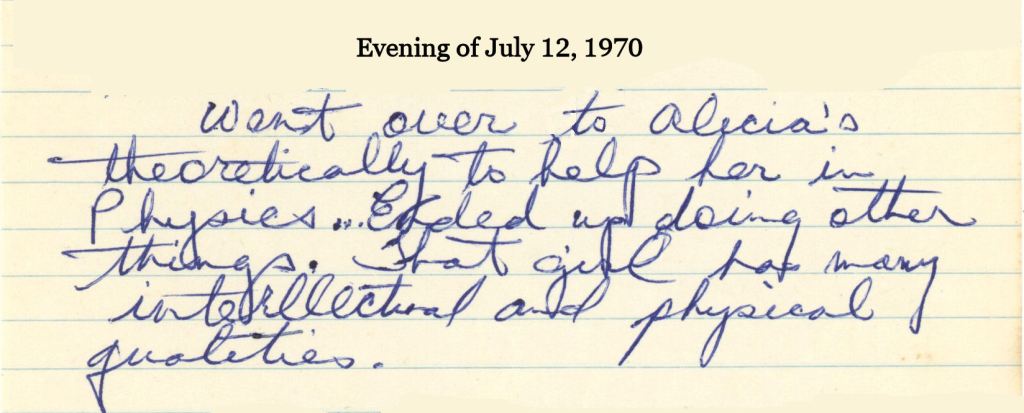
When the Sotos and I got back from Xochimilco, Eufemia gave me a message to call Alicia. Alicia needed help for her physics quiz the next day. I was gone all the next day at Teotihuacan. Apparently, I helped her enough in some way because she called me excitedly around noon on the 14th from a payphone to tell me that she had aced the quiz. However, her professor had called her to his desk after the class to ask her why she used Frank Lloyd Wright’s famous Fallingwater house in SW Pennsylvania as an example of a third-class lever. He had to contact an architecture professor to confirm that her analysis of the structure was correct. Her only response was that “she liked architects.”
In order to thank me for my architectural and therapeutic services, she invited me to join her downtown at Sanborns for a romantic dinner as her guest. We would then visit the archaeological site on the Metro Linea Uno Collectivo (interconnecting subway) that the TV news had talked about, when were supposed have been discussing physics. We then would walk around the National Cathedral and Zocalo or Central Plaza.
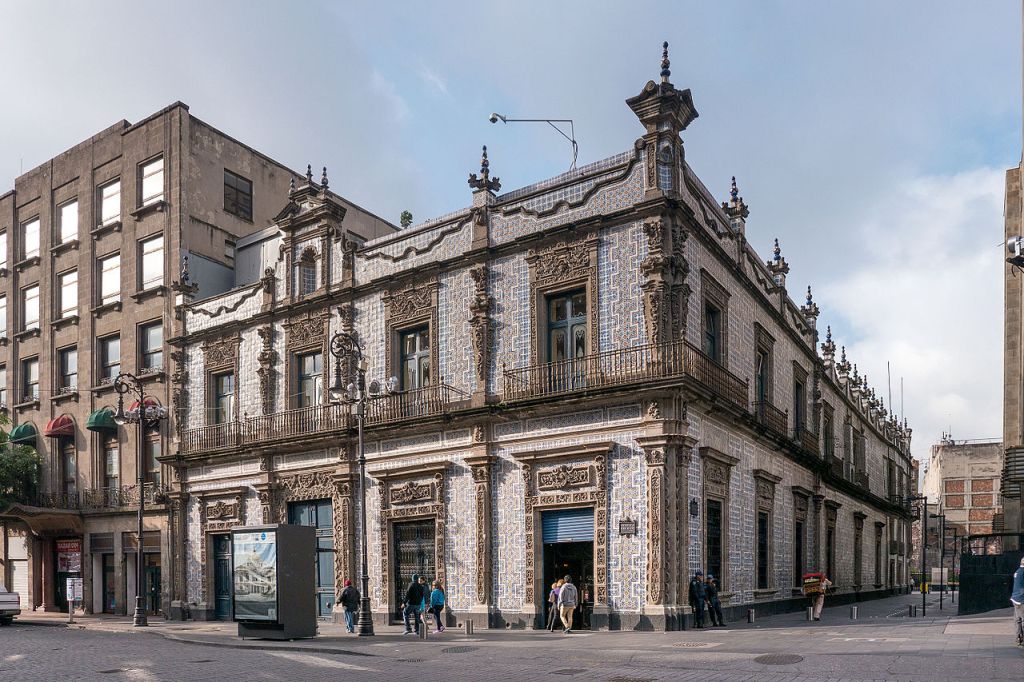


The main meal in Mexico at that time was eaten from 2 PM to 4 PM. Being inside the restaurant was astonishing, because it contained photos of all the famous leaders of the Mexican Revolution eating breakfast or dinner at Sanborns. We sat at the same spot, where Emiliano Zapata and Poncho Villa, plus their generals had held a meeting then eaten a dinner.
Afterward we walked about a block and looked down into a room that had existed in 1500 AD. It was part of the palace of an Aztec noble. Construction workers, who were installing utility lines for a new section of the Metro subway had stumbled into the ruins, but most of the palace was under historic colonial buildings and therefore could not be excavated by the archaeologists.
And this was just the beginning. Extraordinary discoveries have been made under the damp ground of the Valley of Mexico. They have changed the understanding of the Mexica (Aztecs) so much that there is very little similarity between texts on that subject in 1970 and those published today.
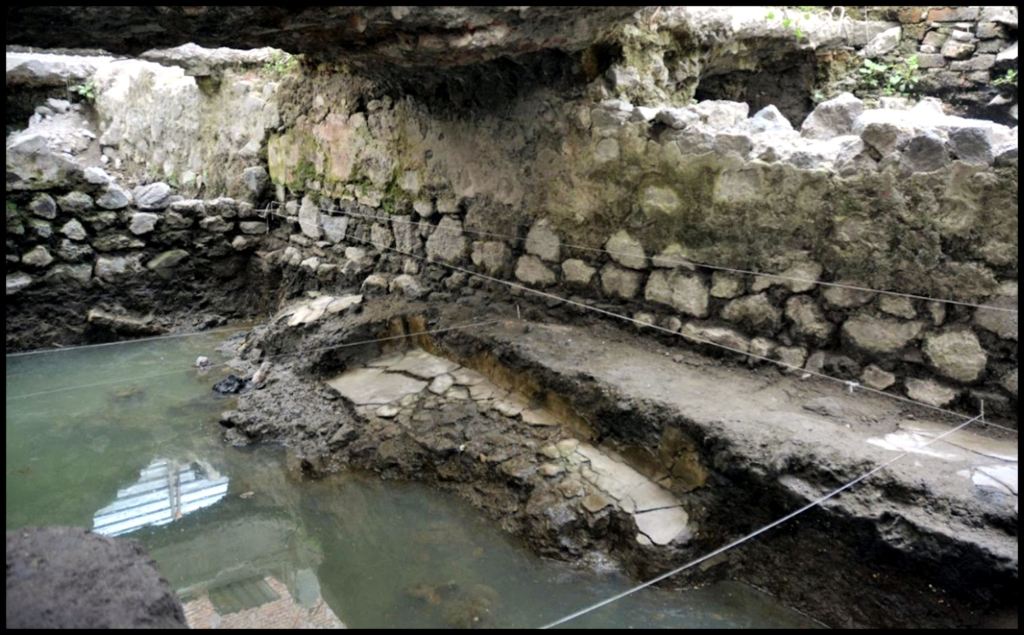
In 1970, the history of the Aztecs was presented as a summary of what Spanish archives said about them, plus several trophy artifacts . . . some of them like the “Aztec Calendar” being enormous in size. Hundreds of underground discoveries since 1968 have propelled archaeologists to a more complete understanding of how all levels of Mexica society lived. Mexican anthropologists now understand why Native craftsmen were able to build such monuments as the National Cathedral with very little additional training, merely by looking at the architect’s drawings. Despite making little use of the wheel, their society had already accomplished major achievements in architecture, civil engineering and urban planning. When given metal tools and construction equipment based on the wheel and pulleys, they could create anything that European craftsmen could.
Also, in the last 50 years, anthropologists and agronomists have come to more greatly appreciate the sophistication of Mexica agricultural achievements. It is now realized that over 70% of the total food consumption of the WORLD are vegetables, grains and fruits that were domesticated in the Americas. That does not include the fact that livestock around the world are now fed maize . . . Indian corn.
Anthropologists now know that the Mexica established several sophisticated agricultural experimental stations near Cuernavaca, Tepotztlan, Chalco and Xochimilco, where wild plants were scientifically domesticated and existing cultivated plants were improved.
In 1970, there were several aspects of Mesoamerican culture in which Mexican archaeologists taught me different “facts” than what was taught students in the United States. Let’s take a look at how those contradictions have stood the test of time.
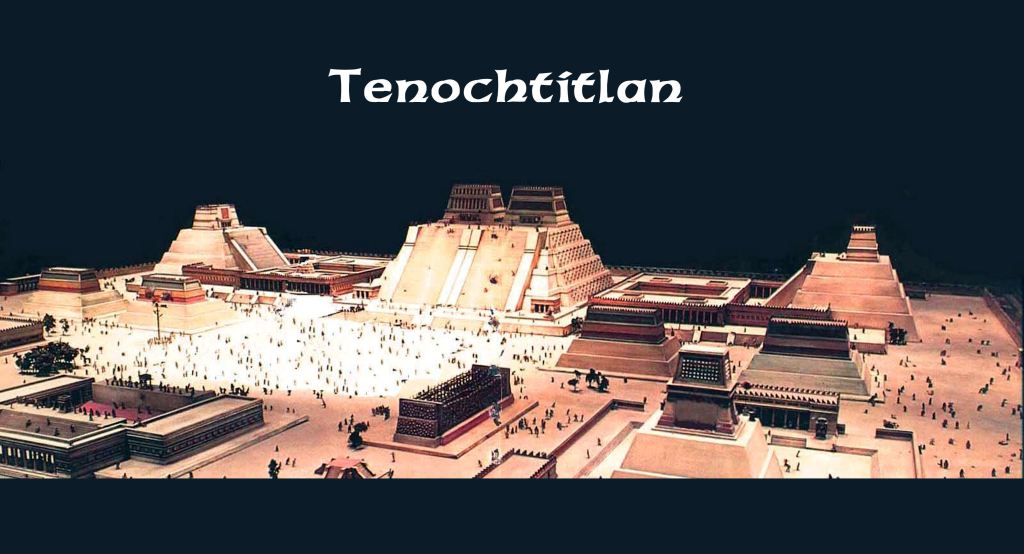
Comparing basic beliefs of archaeology . . . 1970 and 2020
(1) First Americans – Until very recently, students north of Mexico were taught as an absolute fact that the first Americans were Clovis big game hunters, who crossed a temporary land bridge from Siberia around 10,000 BC then continued diagonally across Canada along an ice-free corridor. If I would have put any other answer on a history or anthropology quiz in college, it would have been marked “incorrect.”
When I was in Mexico the first time, their archaeologists already seriously doubted this fact, but they didn’t have the economic and political power of the United States to push this idea in the world stage. Mexican archaeologists had evidence that humans had arrived as early as 30,000 BC – maybe even 50,000 BC – but the vestiges of early mankind had been erased or concealed by ice sheets, rising ocean waters and colluvial movements of soil.
There were mysterious foot prints on volcanic sand in the Valley of Mexico, which had been dated by geologists to about 30,000 BC. Mexican anthropologists knew for a fact that the “Indians” living from Los Angeles southward to the tip of Baja California, were Polynesians. They had discovered ancient artifacts that seemed to be Polynesian, rather than American Indian. There were Polynesian words in the oldest languages of southern Mexico. The “Olmec” heads looked like Polynesians. Mexico’s oldest stone tools and weapons looked like those of the Polynesians.
Fifty years later . . . the Mexican archaeologists have been proven right. The land bridge from Siberia and the ice-free corridor in Canada did not exist at the same time. The oldest and greatest concentrations of Clovis points are in the Southeastern United States. No Clovis points have been found in either Alaska or Siberia. The oldest skeletons found in California – in the Santa Catalina Islands – are Polynesian. Mexico’s oldest skeletons, found in Yucatan caves, are Proto-Polynesians.
(2) Climate and Vegetation – In 1970, academicians in both the United States and Mexico believed that the climate in Mexico and the Southwestern United States had changed little since the Ice Age. You can see the artistic visualization of this belief in the murals painted in the 1960s for the Museo Nacional de Antropologia. Even Archaic Period cave dwellers are shown to be living in a arid environment. For this reason, archeologists in the United States seriously doubted the claim by Mexican archaeologists that the Valley of Mexico once contained both mammoths and mammoth-hunters, who DID NOT use Clovis spear points.
It is now known that the mountains around the Valley of Mexico once had wintertime snow caps that kept the large lakes filled in the Valley. The Valley would have had an alpine appearance when first entered by the Spanish Conquistadors in 1519. The confer forests that now can only be seen on the eastern edges of the Valley of Mexico, once encircled the region. The climate then was colder and wetter than now.
The draining of the lakes, continued deforestation of the mountains and drier climate after the Little Ice Age has given the Valley of Mexico an arid appearance. In Mexico City, today has, on average, rain on 124.9 days a year and receives up to 846.2mm (33.3″) of precipitation. This is only 3 inches less than Dallas, Texas.
The refusal of Gringo academicians in 1970 to accept the presence of non-Clovis mammoth hunters in Central Mexico has recently been completely refuted. In 2018 and twice in 2019, large mammoth kills sites were discovered around the fringe of metropolitan Mexico City. Once site at the new airport construction project contains at least 60 mammoth remains, probably many more. The bones and associated human weapons/tools have been radiocarbon dated to being at least 15,000 to 20,000 years old.
My Mexican mentors were right about everything. Mammoths and mammoth hunters did live in central Mexico long before 10,000 BC. There were also some mastodons in the Valley, but their remains are concentrated in the portion of Mexico that drains into the Gulf of Mexico. The Mexican mastodons seem to be of the same “tribe” as the Florida and Georgia mastodons.

(3) Population movements: A given theme to all Mexican anthropology texts in 1970 and today is that there has always been almost constant movements of peoples and cultural ideas in that part of the world. Traders went out from Mexico to all points of their known world. People from Peru had settled in the states along its Pacific Coast, while it was assumed that the Nahuatl speaking tribes had originated in the western United States . . . from regions that were much farther from Mexico City than the US states of Alabama, Georgia and Florida.
There was no hesitation in Dr. Román Piña Chán as he suggested to me that the advance cultures in Georgia had been kick-started by predominantly male refugees from southern Mexico, while Moundville, AL had been founded by refugees from Toltec lands and the town-states along the Mississippi River had been founded by Toltec or Totonac refugees.
In 1970, and to a major extent, even today, anthropologists in the Eastern United States are obsessed with the belief that Native American populations arrived at one spot shortly after the Ice Age and stayed there until forcibly removed in the early 1800s by the US Government. A clique of archaeologists took over the profession in the Southeastern United States in the late 1980s and continued their control until 2012. They changed the names of Native American cultures that were taught me in college to “phases.” The purpose was to reinforce the myth that new communities, cultural and new artistic styles were created by the same people, who had always lived there. This belief, of course, flies in the face of the migration legends of many, many tribes in the United States.
The irrational behavior and chronic lying that we observed among Georgia’s archaeological “Old Guard” during 2012 and 2103 during the “Maya Myth-busting In the Mountains” propaganda campaign was the last gasp of their old religion. As for what the new generation of archaeologists believe, it is hard to discern. Their profession has collapsed due to the lack of employment opportunities and therefore, the number of students willing to borrow $125,000 so that they can have no job when they graduate. The Society for Georgia Archaeology currently does not even have a working website.
Teotihuacan
I was already studying Teotihuacan, when Alicia invited me to Sanborns. I spent a week at Teotihuacan. However, as a young man I completely misinterpreted it. It was only in 2019, when I re-examined my color slides, field notes and new, high resolution satellite images that I came up with a new understanding. The wrong conclusion and then the unanticipated one will be presented in the next series of articles. You are also going to see many things that you have never seen before, even if you have been to Teotihuacan. I climbed that mountain behind the Pyramid of the Moon!
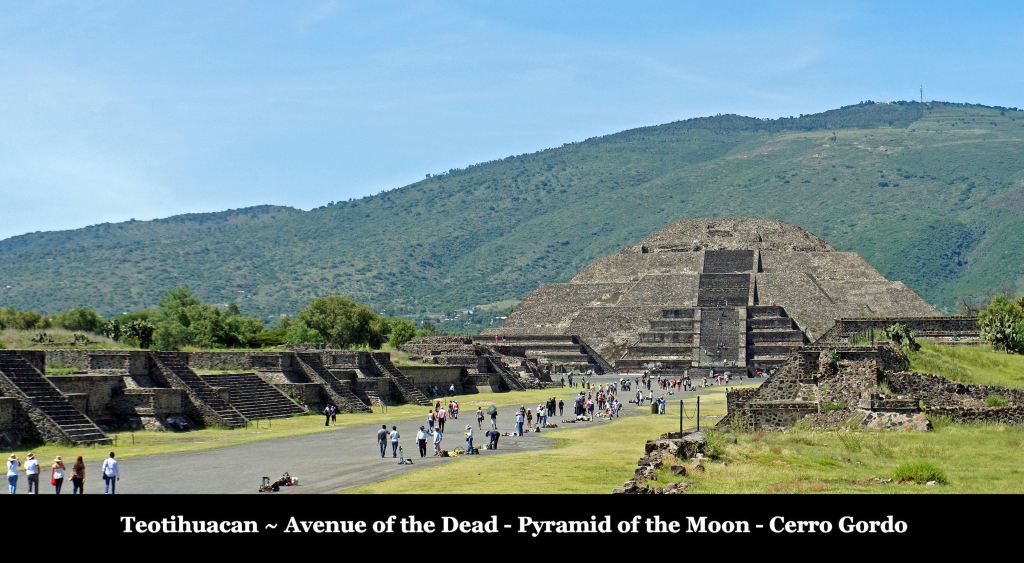
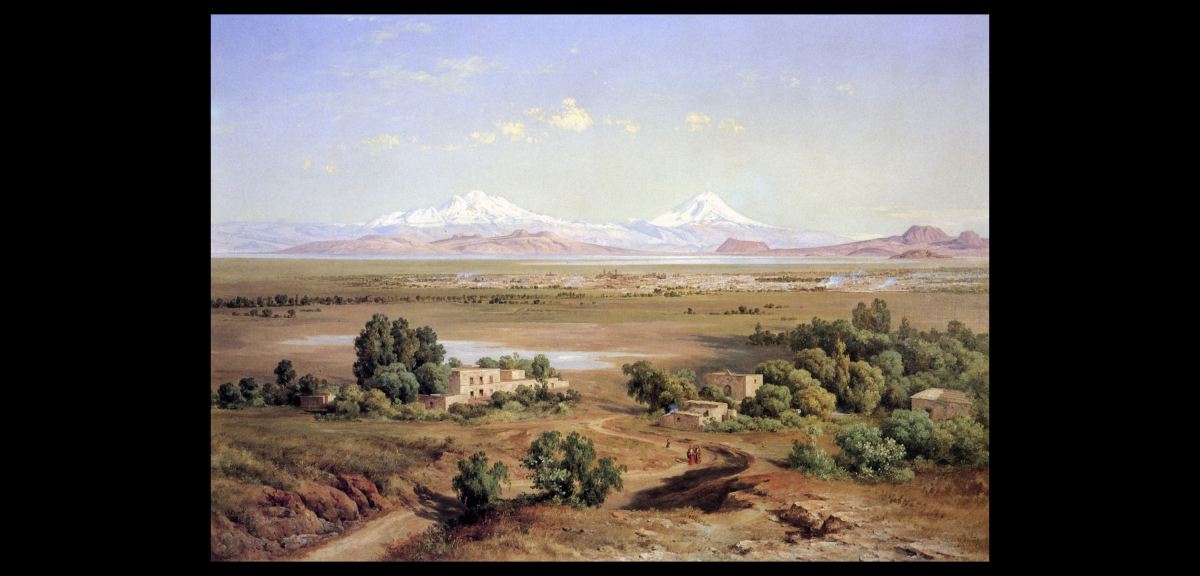
Howdy, Nice mix of then and now.
On Thu, Jul 16, 2020 at 11:57 AM The Americas Revealed wrote:
> alekmountain posted: ” by Richard L. Thornton, Architect & City Planner > One Summer In Mexico – Part Nine – July 14, 1970 El Zocalo y Templo Mayor – > Ciudad de México Do those of you, who were at my barbecue two years ago, > recognize this painting that was over my co” >
LikeLiked by 1 person
This letter is from a reader, who wished to remain anonymous.
Many years ago (mid-1990s) I read a brief item in the periodic publication of the San Francisco Museum of Science. This item noted that skeletal remains from the approximately 40,000 years ago level in Zhoukoutien Cave west of Beijing most resembled 2 nearly contemporary but greatly separated populations: 1st was Australian aborigines and 2nd was ancients of the American southwest. My immediate reaction (The Lightbulb) was that, since the Wallace Strait must be crossed by boat to reach Australia, a founding population from that area of China must have split, and that coastal migration along North America’s west coast during periods of low ocean levels would obviously result in archaeology sites being now under water and out of reach. Research since then has led to this coastal migration view being widely accepted.
However, I have not seen this reasoning carried the next step. Whenever the idea is raised of “Polynesians” or other Pacific ethnicities being in Central or South America, it is quickly squashed because, of course, no one could possibly get here from there across the open Pacific, which seems to be as far as the common imagination can visualize. While this ocean-crossing, seafaring concept may merit consideration (considering Polynesians’ amazing seamanship), I would propose that a population which split to go east from Zhoukoutien by water down the NA coastline could easily explain a ghost population reaching the Americas very early, consistent with emerging discoveries. Such a population could have introduced genetics, language, and the cultural elements observed faintly in the archaeological record, including some mysterious indigenous isolates now being found in the Amazon Basin. This theory might even cover introduction of sophisticated irrigation and farming technologies only now being discovered in the Amazon and Peru.
What do you think?
LikeLike
Some good stuff in this post Richard. Meanwhile, looks like there may be a bit of breakthrough in relation to the narrative in Georgia:
https://www.heritagedaily.com/2020/07/rewriting-history-new-evidence-challenges-euro-centric-narrative-of-early-colonisation/134220
LikeLiked by 1 person
That was an excellent article. I was surprised that anyone elsewhere even knew about the archaeological work in the Oconee Valley.
LikeLiked by 1 person
Potential allies!
LikeLiked by 1 person
Richard, I am so excited to absorb this information. Your research is powerful and valuable. So glad this is not on YT type sites that can be taken down. Only draw back is not enough folks are seeing this critical information. Much of this is in alignment with my recent studies on the Plasma Universe, and Solar disaster cycles. Petroglyphs, culture, architecture, language, all tell the story of what ancient humans experienced. We must meet and talk sometime in near future. I have a place in Trackrock. We really need to encourage the NPS to purchase that property near the archeological site entrance. Charlie H. You have my email.
LikeLiked by 1 person
I have thought that all along. The Track Rock Archaeological Zone includes much more than what the public is being told. Vast quantities of Mesoamerican artifacts were sold to collectors when the GA DOT regraded Track Rock Gap Rd. The strategy for my many articles is to flood the internet with accurate descriptions of Georgia’s history so that the public becomes aware of it. That strategy is working. There is going to be a serious History Channel program filmed here next month on the subject. The History Channel is getting rid of its Ancient Alien Astronauts reputation.
LikeLiked by 2 people
Howdy, Excellent article. Yesterday I found a point…rare event for me. While looking for information on obsidian I came across a reference showing a Mexican point…very similar in shape…not like the Arrowheads seen iin collections up here. Turned up good references for blades.
On Thu, Jul 16, 2020 at 11:58 AM The Americas Revealed wrote:
> alekmountain posted: ” by Richard L. Thornton, Architect & City Planner > One Summer In Mexico – Part Nine – July 14, 1970 El Zocalo y Templo Mayor – > Ciudad de México Do those of you, who were at my barbecue two years ago, > recognize this painting that was over my co” >
LikeLiked by 1 person
All,
Would not have put these together if I did not think this was significant.
Richard, you’re on-ground research is stellar. Ben you with the cosmos. Would like to involve Doug V in this.
The track rock petroglyphs are small but show the story of ancient human.
No telling what is in the mountains of Georgia.
This email is to place comms between what I am seeing as those who “need to know”.
Richard,, your history and research must be exposed to awakened physics. Critical this is done.
All please let me know what data reservoir or sink or comms I can provide to make these connections continue?
Charlie Harner (Randrat)
678-334-1333
LikeLike
Of course, our research is a work in progress . . . with few “final answers” at this date. What we would appreciate you doing is spreading the word about the site and copying portions of reports that you like to appropriate other persons. I appreciate your kind comments and participation in the web site!
LikeLike